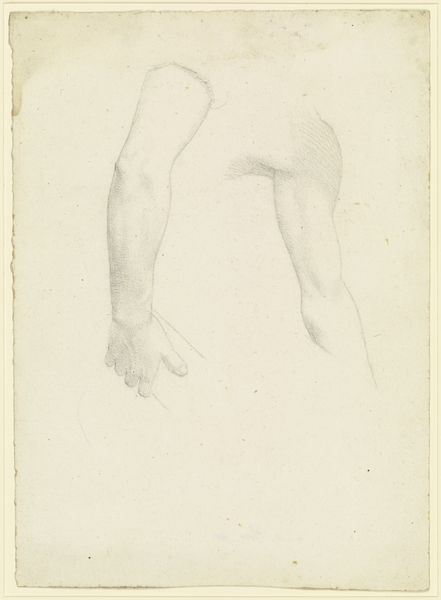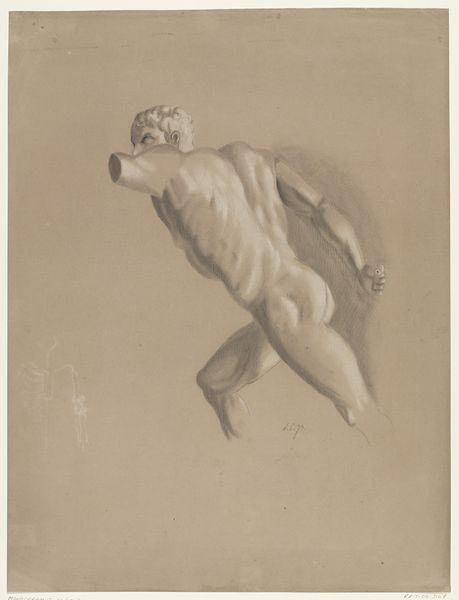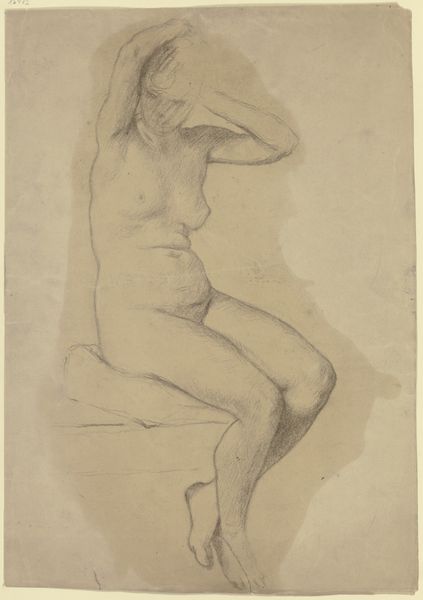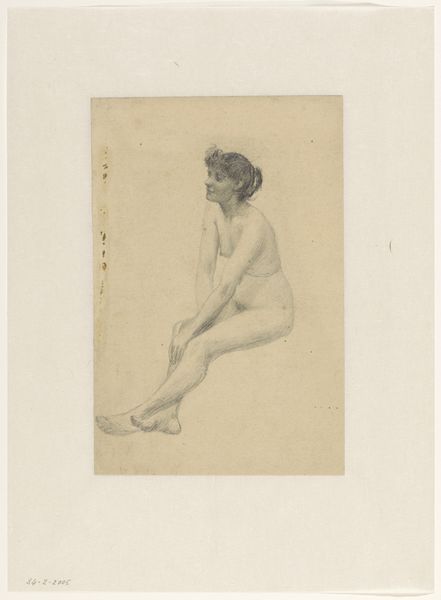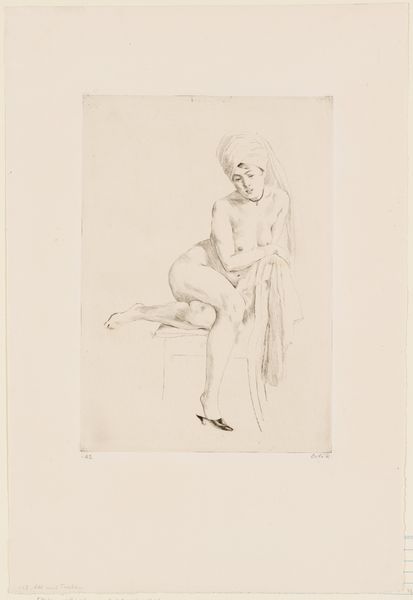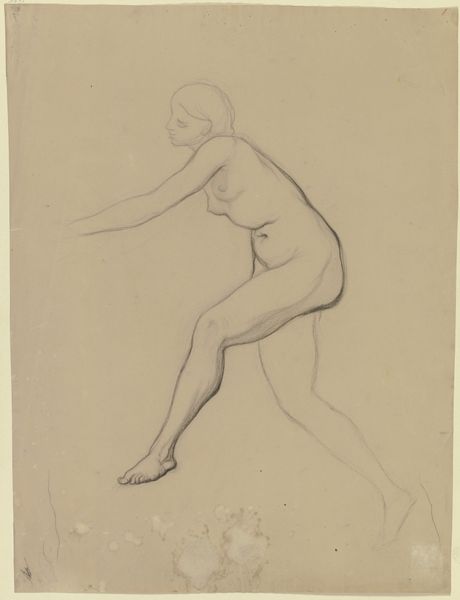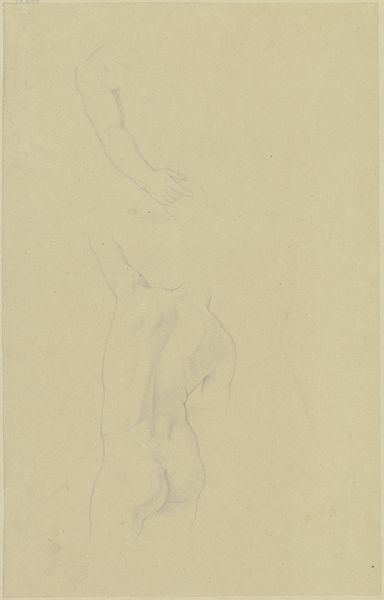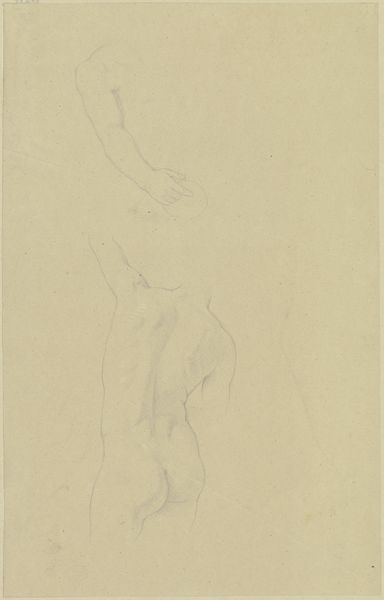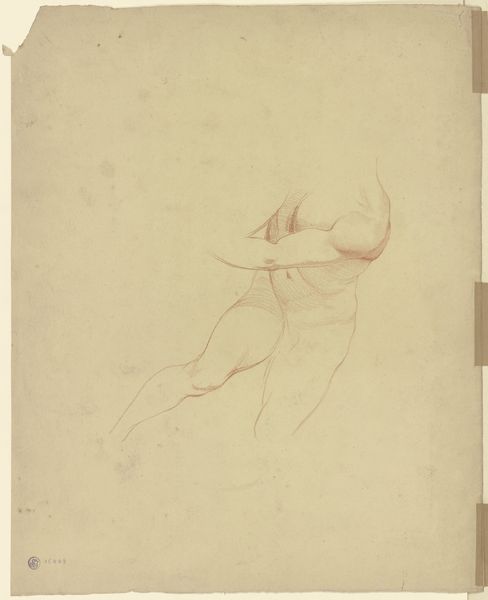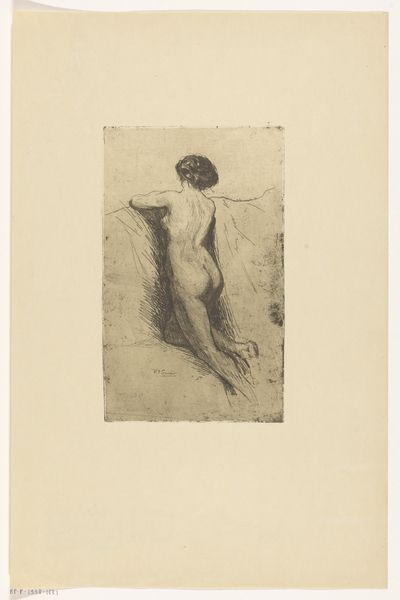
Dimensions: height 350 mm, width 267 mm
Copyright: Rijks Museum: Open Domain
Curator: Immediately striking, isn't it? The sheer vulnerability… or is it defiance? Editor: You’ve jumped right in! I find the piece, a drawing titled "Zittend naakt, op de rug gezien," or "Seated Nude, Seen from the Back," by George Hendrik Breitner, is so evocative because of the subtle gradations Breitner achieved with pencil on paper. It’s located right here at the Rijksmuseum. Created sometime between 1867 and 1923. Curator: It’s all in the line work, isn’t it? See how it seems to capture not just the physical form, but a state of mind. Almost like a whisper of a memory... Makes me wonder who she was, what she was thinking. Editor: Breitner's work often explored the intimate moments of daily life, though not always celebrating them, of course. This work fits into a larger discourse surrounding the representation of the female nude in art and the gaze, and the negotiation of those dynamics by artists working outside established salon systems. I'm curious about that faint pencil outline that is not fully fleshed out, suggesting he was exploring form or contour. Curator: The unfinished quality only heightens the intimacy for me. You almost feel you’re intruding on a private moment, wouldn’t you say? It’s less a declaration and more like a tentative thought, sketched out in light and shadow. Editor: Perhaps… or could it also speak to the realities of artistic production? Models were often paid by the hour; so perhaps time was of the essence! Either way, in leaving the sketch so 'raw,' Breitner almost welcomes us to question the whole process of image making itself. Curator: Exactly! That openness invites a dialogue not only with the figure but also with Breitner himself, his artistic process. I can almost feel him in the room with me. Editor: The history surrounding such a simple artwork can yield so many interpretations of class, gender, and the circumstances of its production and initial consumption. Curator: And that’s precisely what makes it such a compelling work. A meeting of history, intimacy, and artistic intention, all caught in the delicate trace of a pencil. It invites us into this potent combination. Editor: Absolutely. Thank you.
Comments
No comments
Be the first to comment and join the conversation on the ultimate creative platform.


